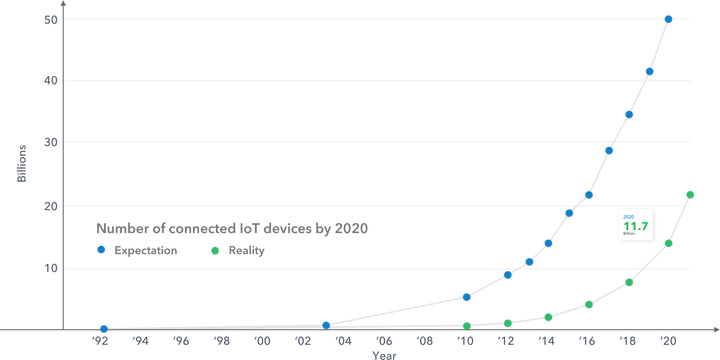IoT, Big Data, and Cloud: 5 Notable Cloud Storage Trends Coming in 2019

The cloud computing paradigm provides low-cost storage for businesses with excellent accessibility and unrivaled scalability. With the market for cloud storage expected to grow to $92 billion by 2022, it’s clear businesses will look to maximize the use cases for this form of storage.
This article highlights five notable cloud storage trends, with a particular focus on IoT and Big Data, as the year 2019 looms closer.
Cloud, IoT, and Big Data
Businesses of all sizes are collecting enormous quantities of complex, fast-moving data that contains value which may give them a competitive edge or lead to better business decisions. An increasing proportion of this data comes in the form of information from a network of smart devices equipped with sensors; the so-called Internet Of Things (IoT).
In fact, such is anticipated growth in IoT data that Cisco estimates the IoT will generate more than 500 zettabytes per year in data from 2019—that’s 500 million petabytes!
The problem is that the infrastructure required to process, store, and derive insights from IoT data and other big data sources is prohibitively costly to provision on-premise. Many businesses are now turning to the cloud as a realistic option to assist with their big data workloads. This is because the cloud provides a centralized platform with access to powerful computing infrastructure and cheap storage at a relatively low cost.
1. Cloud Big Data Analytics
For the cloud to support big data analytics, its architecture needs to meet the high demands for storage performance for such workloads. It’s important, therefore, that companies looking to conduct big data analytics in the cloud choose only high-performance distributed storage options.
Thankfully, some of the main cloud storage providers, including AWS, Google, and Microsoft, are beginning to recognize the increased need for higher performance storage, and they are now starting to enhance their existing services with the capabilities necessary to conduct big data analytics at desired performance levels.
As cloud storage providers evolve and upgrade their services, expect to see cloud storage used even more to support big data analytics workloads.
2. Storage Tiering for Big Data
Even if enterprises prefer to use a dedicated private cloud or on-premises infrastructure for primary big data storage, public cloud storage services can still play a role in tiered storage approaches. Storage tiering uses policy-based data classification rules to move data between different types of storage technologies.
For example, NetApp’s cloud storage tiering service combines the use of the high-performance Amazon EBS volumes for “hot” data and Amazon S3 object storage for “cold” data. Big data frameworks like Hadoop support this type of storage tiering, letting businesses categorize their clusters into hot and cold storage tiers depending on how often you access the data in each tier.
Storage tiering for big data adds an extra level of cost efficiency, particularly when businesses avail of public cloud storage services as a low-cost option for less frequently accessed data.
3. Dark Data Migration
According to Gartner, dark data is information that businesses collect during regular activities but fail to use for other purposes. This data could contain value, however, it is stored in an unstructured format and may not be accessible via a query (e.g. information in scanned documents).
Extracting dark data will become more widespread as businesses look to derive value from it and improve their analytics through access to larger data pools. Cloud storage services can come in useful here in terms of lowering the cost of the overall extraction job.
Ideally, businesses will use dark data extraction tools that can identify garbage information versus valuable information, getting rid of the former and migrating the latter to low-cost cloud storage.
4. Optimizing Cloud Storage for Machine Learning
The enterprise AI revolution is firmly underway, and cloud providers already have the technologies in place to deliver their own powerful AI infrastructure to businesses. Machine learning models and algorithms, in particular, drive some of the most exciting enterprise AI use cases.
Given that these models rely on swathes of data to improve their performance, don’t be surprised to see cloud providers further refine and optimize their cloud storage options with machine learning in mind.
5. IoT Sensor Data Storage and App Development
Services and IoT data storage powerhouse Amazon DynamoDB provide low-latency NoSQL databases for storing and querying device data. Meanwhile smaller, boutique platforms like Ubidots and Losant continue to prove themselves as leading IoT App Development platforms delivering complete sets of tools and App components to connect, process, store, and analyze data both at the edge and in the cloud. Expect to see businesses using these types of dedicated IoT storage and processing services much more in 2019.
Wrap Up
Cloud storage has come a long way since 1983 CompuServe offered its consumer users a small amount of disk space that could be used to store files they uploaded. These five trends show what you can expect going into 2019 if you’re working with or looking to adopt cloud solutions in your business.


